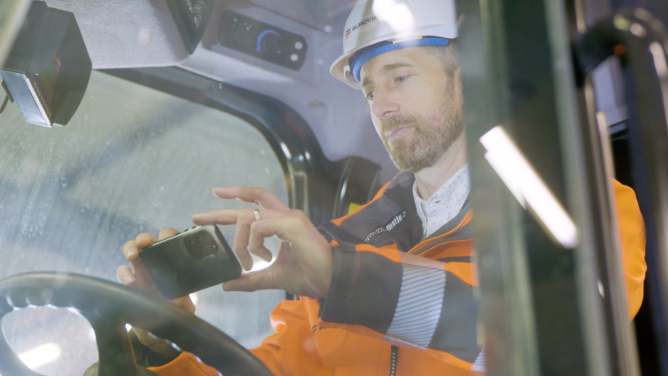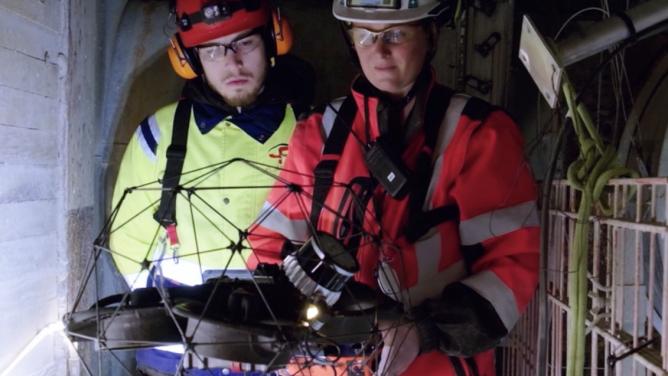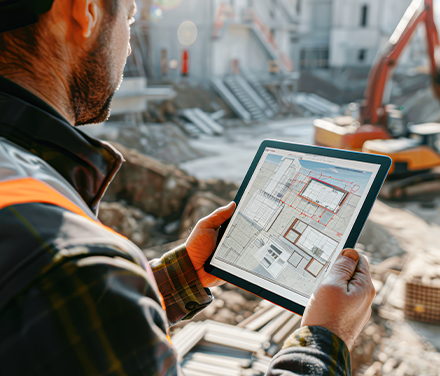Construction accounts for a significant portion of total energy consumption and greenhouse gas emissions. So sustainable construction – which Emilie Hergott defines as “construction that lasts, that is able to last, that we want to last because its architecture makes you want to use it” – seems to be the way to go for the trade. That much is clear. Now it’s time to do something about it.
Emilie HERGOTT, directrice du développement de l’ingénierie et de l’#innovation chez @AREPGroup : “la #constructiondurable est celle qui dure, sera capable de durer et qu’on aura envie de faire durer parce qu’il y aura une #architecture qui donnera envie d’investir ce lieu.” pic.twitter.com/KZwCXeW3Nu
— Leonard (@WeAreLeonard) March 3, 2020
The spotlight on carbon impacts
New European regulation, that is to be soon transcribed in France’s future Réglementation Environnementale (RE2020), is crystalizing months of conversations about new requirements relating to energy consumption and the weight of carbon emissions. A new indicator, carbon impact (based on the emissions from a building and the materials used to build it) is bound to bring about more sustainable initiatives during construction as well as operations, says Armelle Langlois, who points out that, “if construction accounts for 60% of greenhouse gas emissions, 40% of those emissions are associated with the building’s use over a 50-year period”.
Still, measuring carbon impact isn’t all that straightforward. The questions include which methodology to use, how to compile a workable database containing each material’s carbon footprint and then how to mainstream low-carbon design. This is where life cycle analysis (LCA) is starting to gain a lot of traction. LCA encompasses everything from raw material extraction, transport and processing in production plants to the logistics to carry the processed materials to worksites. So it covers all the emissions before materials are used in a construction. It also takes a close look at the way in which the various components are used in a construction project, the building’s life and, finally, its deconstruction. The goal is to provide “the most accurate knowledge possible of the origin of the various impacts, based on multi-criterion studies,” in order to measure energy consumption and support the reduction of a building’s emissions, says Bruno Peuportier.
How can innovation make construction more sustainable?
Construction methods are evolving to accommodate new analysis findings. And one of the drivers here is the appearance of new construction technologies that have a positive impact on the environment – or “CleanTech”. Armelle Langlois explains, “The materials used in buildings account for most of the emissions. So the decisions we make during the design phase are important.” That is why the market is seeing a wide array of materials that contain less carbon (because they are reused or recycled), materials that store carbon, and materials designed around cleaner production processes. Low-carbon and ultra-low-carbon concrete are two examples of this.
The trade can also rely on new sustainable tools, equipment and processes, which use less resources and energy, to limit environmental impacts during design and construction. These approaches are also going mainstream. As Emilie Hergott puts it, “During the design phase, we use digital tools to assess the relative performances of a number of variants, in terms of their carbon impact and energy consumption. These tools are especially useful during the design stage because we use them early on in the project.”
The choice of solutions also includes smart buildings, which provide a plethora of IoT applications and efficiency management platforms that optimise the potential for energy efficiency and the use of resources during the operation phase. Benjamin Tincq provided an overview of these new solutions, which are included in the fifth ‘Emerging Trends’ review on Leonard’s website.
Retrofitting yesterday’s buildings
If we’re serious about sustainable construction, it also makes a lot of sense to apply these principles to existing buildings.
Manal Rachdi often works on renovation projects and reports that “customers are more and more aware of the carbon footprint of demolition works.” For that reason, “we work on existing buildings in several stages. But the most important thing is to start by understanding the building’s DNA, what we have to keep. The architect’s creative approach blends into the project. It starts with a sensitive approach to the archaeology of the surroundings.”
Arep, which principally works on buildings that belong to its parent company and main customer, Gares & Connexions (a division of SNCF, French Rail), agrees. This architecture firm has developed sharp expertise in adapting existing buildings to specific new uses. To tackle this challenge, Arep’s designers study the ways in which people appropriate space and use their findings to create tools that prompt people to behave in certain ways. These nudges are designed to make areas more frugal as regards energy consumption without altering the building’s structure. Lastly, Arep is also working on reusing technical equipment, most of which is already installed on-location. SNCF is looking at so many possibilities today that an entirely new market is coming into focus. But that’s a different story.


